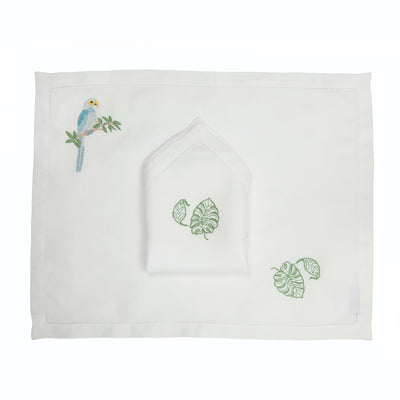Pareidolia
I learned this word last week, I find it very, very, very pretty. Pareidolia.
And then when you hear it, you really don't know what it means at all.
It could be a form of sentimental state, an illness, a vegetable, a poetic expression, well, I think it could work with almost anything.
Pareidolia, who are you? Yippee, tell us Duchess!!
So, pareidolia comes from the Greek “para” which means beside – parapharmacy isn't it and “eidolia” which is an image, a shape or an appearance. You found ?
Pareidolia is therefore the scientific word for the happiness of finding dragons in the clouds.
To understand the mechanism of pareidolia, we must first understand how our brain works. Our brain has a natural tendency to always analyze its environment and scan it for known things. For what ? To be sure to react in the right way according to what he has already done or not and what has succeeded or not. Thus, what we see or look at is compared to what we have already seen, which makes it possible to validate a model of reality already encountered.
It's clear ? Mmmhhh…not sure, I also had a little trouble understanding.
Basically, we do it again: we look at something and the brain to be sure it's real compares it to its database, if it's already seen, then it's real and the stimuli that follow engage coherently.
Better ? Let's hope… because that's how pretty pretty pretty fruit salad pareidolia works. We look at the clouds and we find a thousand things there, dogs - often dogs by the way, aren't they? - , dragons or planes; we look at the rocks to find faces there; we hear the wind blowing to recognize screaming voices or we stare at tree trunks to discover open mouths and threatening eyes...
Pareidolia is like this, it makes us Paul Eluard of the sky, Charles Baudelaire of the forest or Arthur Rimbaud minerals.
So because our brain connects these random shapes that nature offers us with referenced shapes from our library of life, forget all these scientific explanations to lie down in the grass and watch, the next time you can, the clouds scroll by. to discover a world of images made of white cotton candy.
Take advantage, good people, of the fleeting and poetic happiness that nature offers us, that of dreaming it under a completely different twist...
And then when you hear it, you really don't know what it means at all.
It could be a form of sentimental state, an illness, a vegetable, a poetic expression, well, I think it could work with almost anything.
Pareidolia, who are you? Yippee, tell us Duchess!!
So, pareidolia comes from the Greek “para” which means beside – parapharmacy isn't it and “eidolia” which is an image, a shape or an appearance. You found ?
Pareidolia is therefore the scientific word for the happiness of finding dragons in the clouds.
To understand the mechanism of pareidolia, we must first understand how our brain works. Our brain has a natural tendency to always analyze its environment and scan it for known things. For what ? To be sure to react in the right way according to what he has already done or not and what has succeeded or not. Thus, what we see or look at is compared to what we have already seen, which makes it possible to validate a model of reality already encountered.
It's clear ? Mmmhhh…not sure, I also had a little trouble understanding.
Basically, we do it again: we look at something and the brain to be sure it's real compares it to its database, if it's already seen, then it's real and the stimuli that follow engage coherently.
Better ? Let's hope… because that's how pretty pretty pretty fruit salad pareidolia works. We look at the clouds and we find a thousand things there, dogs - often dogs by the way, aren't they? - , dragons or planes; we look at the rocks to find faces there; we hear the wind blowing to recognize screaming voices or we stare at tree trunks to discover open mouths and threatening eyes...
Pareidolia is like this, it makes us Paul Eluard of the sky, Charles Baudelaire of the forest or Arthur Rimbaud minerals.
So because our brain connects these random shapes that nature offers us with referenced shapes from our library of life, forget all these scientific explanations to lie down in the grass and watch, the next time you can, the clouds scroll by. to discover a world of images made of white cotton candy.
Take advantage, good people, of the fleeting and poetic happiness that nature offers us, that of dreaming it under a completely different twist...









